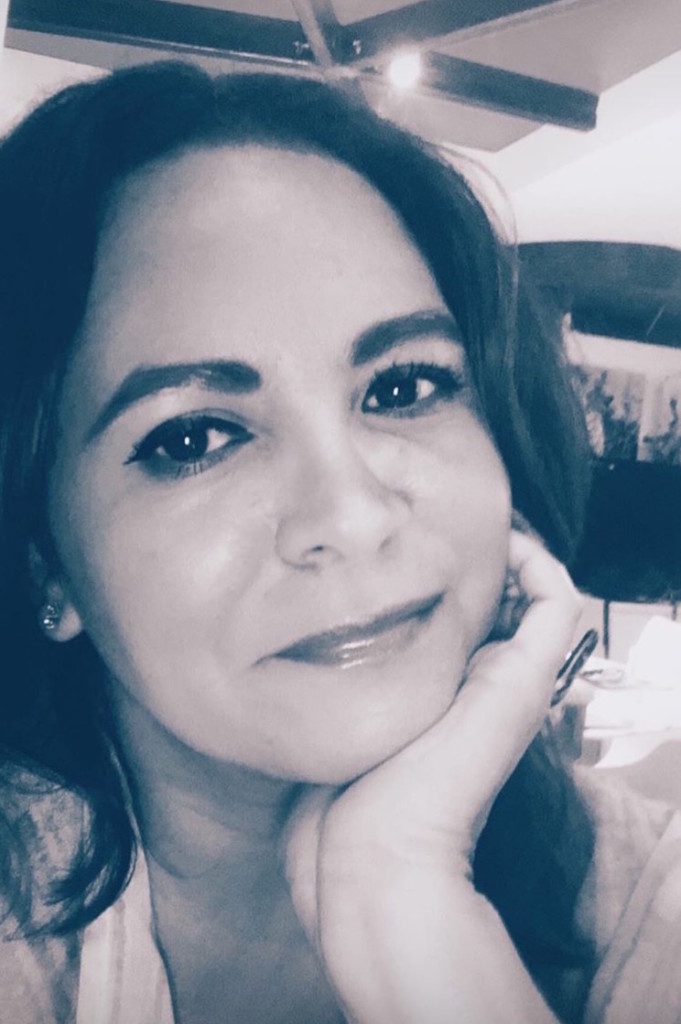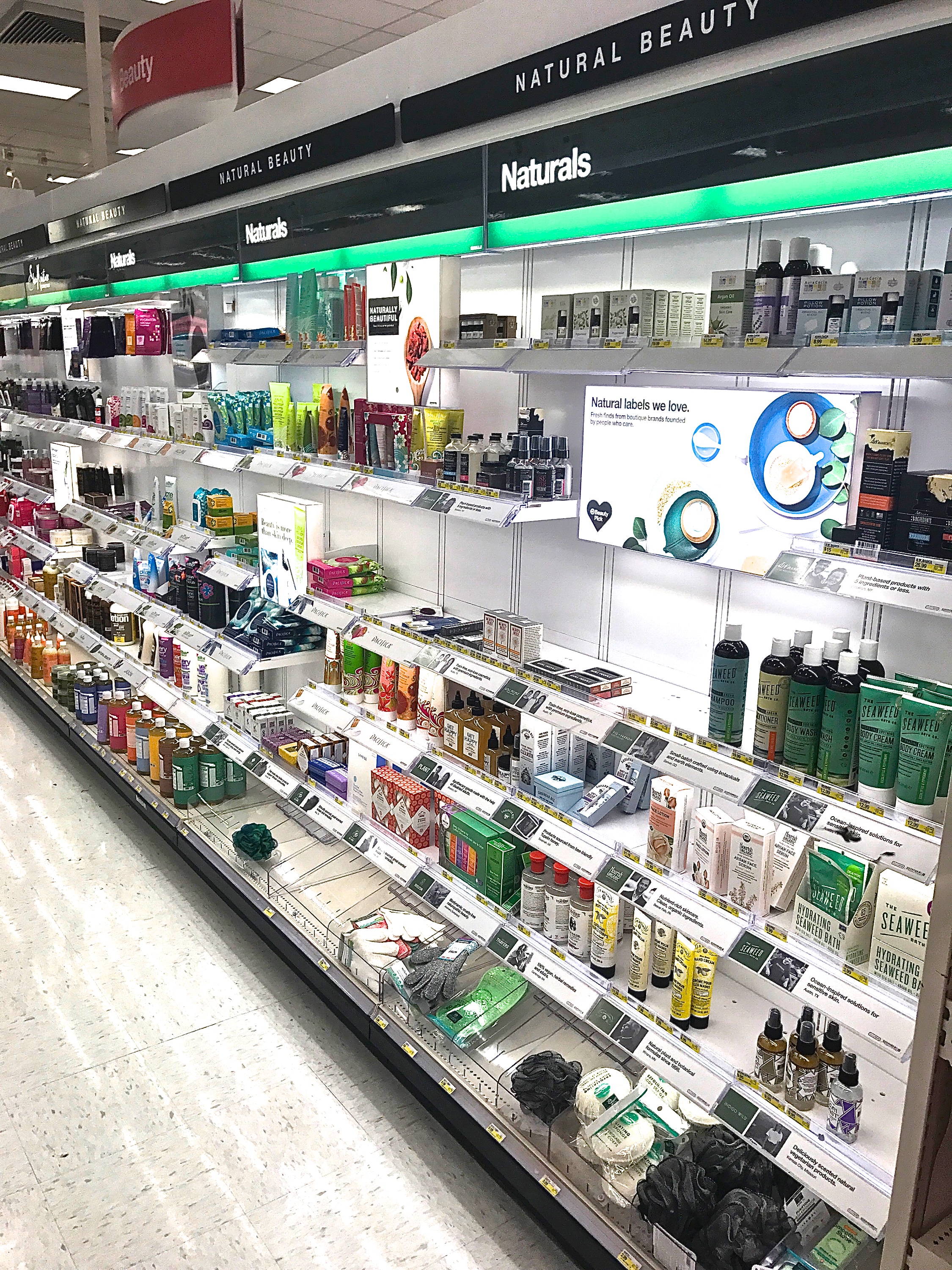
One of my most asked questions is how do I figure out what to look for on a label to see if the product is really natural or not? While it may seem intimidating to try to decipher all the claims on the front and ingredients on the back of products, but once you get some basics you can spot the imposters (like the one above) in no time.
Who better to walk you through the basics of labels, than somebody who is behind a label themselves? I tapped Victoria Fantauzzi, CEO & Co-Founder of La Bella Figura Beauty and creator of A Night For Green Beauty, to share her thoughts on what to watch out for and how to begin advocating for yourself in this area.
How To Read A Label with Victoria Fantauzzi
Before we get into reading labels, let’s talk about you! How did you get started with formulating products?
We might have to go way back. I’ve always loved cooking and science and used to teach children from second all the way through sixth grade. I always enjoyed getting kids excited about science, especially young girls through cooking. They would say, “I hate science. I’m not good at it” and I would respond, “Do you like cookies? Let me tell you all about the special process it takes to make good ones.” I found in order to formulate good products you have to be more than passionate about ingredients you need to be curious, patient and have a willingness to please just like a chef. When I learned about unnecessary ingredients in cosmetic products I knew I could formulate products that nurtured the skin and were made with better ingredients. I explored my curiosity and then began a journey into a modern approach towards formulation, which is still how I create products today.
People want safer products, but many aren’t sure what they need to be looking for. For the beginners out there, what are some basics they need to know when they first take a look at an ingredient list?
The first thing to know is that an ingredient list contains ingredients in the order in which it was formulated. The first ingredient contains the highest amount per formula. If it’s water/aqua then it’s likely a substantial amount of water. If the “main” or marketed active ingredient is listed towards the end it’s very likely such a low concentration you may need to reconsider the product for something more suitable to what you need. I also like to advise clients to read an ingredient list all the way through to the end. Sometimes a product reads well until the end when you see fragrance listed or phenoxyethanol or certain dyes that you may not want in your products. These tend to be in lower concentrations, therefore, are listed towards the end of an INCI list. If you don’t want these ingredients in your products make sure you read the label carefully.
What are some common personal care products that immediately raise a red flag for you?
For me, it’s baby products and lipstick. I think any company that makes harmful baby products really sucks. Babies don’t need perfume or fragrance or harsh detergents or phenoxyethanol. Stay away from those types of products. Lipstick is another product that you’re literally ingesting and if you wear it diligently and reapply throughout the day then you’re eating a lot of what’s in the formula.
While it may be intimidating at first, I firmly believe anybody can learn to decipher which ingredients are safe. What do you think is a good starting off point for someone to learn more about individual ingredients?
I think a good entry in green/clean/natural beauty is to know what you want to achieve. Do you want quality skincare or better for your skin makeup or maybe something that makes you feel comfortable for your family and environment? You can go down a convoluted rabbit hole if you try to tackle it from a place of fear. If you want to learn about ingredients, for example, the benefits of Cupuacu butter research from a botanical dictionary. There is a ton of misinformation about ingredients on the web so learning from a source like one about plant science is your best bet. I know that’s a lot of work and most people don’t have the time for that, but I’m pretty thorough about learning. I’m not a fan of certain databases that provide partial information. You should also be able to ask a brand about the benefits of ingredients in their products. If they have no clue that should explain a lot about what they’re creating.
What are some trusted resources consumers can turn to when researching ingredients?
Unfortunately, there is not a resource I would say is foolproof on this topic. In the US, the FDA regulates ingredients as food, but not in cosmetics. I think the consumer is the most trusted resource by evaluating what they want and do not want and asking questions based on their needs. I do really like the app Think Dirty, which you can use by scanning a product label and it tells you what ingredients may be of highest concern and why. You can then decide for yourself if you want to know more or if it’s deemed safe enough for your peace of mind.
You and I both know that labels don’t always tell the whole story, which can be infuriating and discouraging for consumers trying to go natural. Products can be green-washed, ingredients can be misrepresented or omitted entirely, and by-products from chemically processed ingredients go unseen. What advice can you give as a formulator to help readers spot the imposters?
Learn the marketing gimmicks. When brands say, “formulated without” let that be an indicator to research further. What else is in that product? Most brands producing quality content are proud to share the entire ingredient list and have nothing to hide. Find out what the entire formulation is made with and don’t get caught up with the scary sounding ingredients that a product may be “made without.” I also advise being skeptical of brands that jump on trendy bandwagons. Right now it’s CBD and cannabis. There are so many brands trying to make fast dollars by incorporating CBD and slick marketing jargon into their products. It makes me upset because they’re either not knowledgeable about the type of CBD used, the extraction or source, which makes all the difference in the world or the research behind effectiveness for their own product. I’ve seen and read so much nonsense about CBD infused skincare products lately and it’s upsetting.
“Green is always clean, but clean isn’t always green.”
Finally, and this is the saddest advice I have to share. Don’t necessarily trust the words green, clean or natural. Any brand can say those things and many retailers love claiming those words because they’re marketable and lure a growing conscientious customer to them. The reason “clean” came on the scene was because it sounds sexier than green. Green as a description for products made with natural or naturally derived ingredients is too “hippie” sounding for marketing so big companies and brands worried about not connecting with those customers have ceased using green in favor of “clean.” My issue with clean is that there are so many brands using that description while also participating in greenwashing. If you look deeper into their formulations they’re using ingredients that aren’t natural at all or are harmful to ocean life like plastics or broad spectrum neurotoxins. I’m proud to call my brand green and do not care if it doesn’t cool because ultimately my job is to make products of top quality material that doesn’t harm the environment, can biodegrade and offers visible results to our customers. I’m not going to hide behind terms that allow me to sound trendy or get away with nonsense. I always say, “Green is always clean, but clean isn’t always green.” Again, it’s up to the consumer to determine what ingredients on the label don’t meet their criteria or is neither natural or naturally derived if that’s their main goal.
A huge thanks to Victoria for weighing in on this topic! We all have to start somewhere and for me, it was breaking down ingredient lists and looking up ingredients I didn’t know. It didn’t take long before I could whiz through labels at the store and quickly spot the good guys. Think Dirty is a good resource to have while you’re out shopping like Victoria mentioned, and I also have learned a lot from this blog by a chemist. She doesn’t actively write new posts anymore, but there’s a huge database to search from.
Leave a comment








